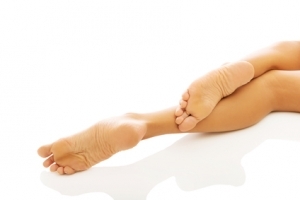Homemade electrolytes for chickens in the heat

In hot weather, chickens are at risk of heat stroke with a high risk of death. Birds do not sweat like humans do, and their ability to regulate body temperature is somewhat limited. Therefore, it is worth knowing how electrolytes are prepared to prevent overheating.
Let's start by looking at ourselves - what do we drink in the summer? Most likely, your choice of soft drinks in hot weather is significantly different from strong drinks in the winter cold.
It's the same with chickens. One strategy to keep your feathered pets healthy in the scorching heat is access to plenty of cold water. The most famous life hack is to add ice cubes to the drinkers.
However, electrolytic drinks not only protect the body from stress, but also promote growth and egg production in hot conditions.
However, let's start with the main thing - HEALTH protection. As mentioned above, chickens don't sweat. Instead, they spread their wings and lift their feathers, allowing the heat to escape. They also pant and vibrate their throat muscles to release warm moisture.
How to recognize heat stroke in chickens? Birds will pant, spread their wings wide, and fall with their eyes closed. Signs are diarrhea, refusal to eat, lethargy.
As first aid, the bird is taken to a cool, dark room and there it is carefully washed, starting with the legs and ending with the scallop, with cool, but not ice-cold water. Then the electrolytes are soldered and left to recover.
Electrolytes are made up of minerals and alkalizing substances and play an important role in controlling fluid balance in the body. They affect body hydration, blood acidity, muscle function, and other important mechanisms during heat stress.
Electrolytes are especially important in summer or during heat stress because the body uses them up faster. On sale you can find ready-made preparations or make them yourself.
It's always a good idea to have some electrolytes on hand in your chicken medicine cabinet. After all, they can become a decisive factor between the life and death of a sick chicken or chicken.
Homemade Electrolyte Recipe
1 glass of water
2 teaspoons of SUGAR
1/8 teaspoon SALT
1/8 teaspoon baking soda
Stir until sugar and salt are completely dissolved. To serve, dilute 2 teaspoons in a glass of water and pipette a few drops at a time.
As a preventive measure, mix electrolytes with drinking water (at the rate of a cup of electrolytes per 4 liters of water) and give three consecutive days a month. To water all livestock, fill all drinkers with ready-made drink, removing plain water from access. After the birds have drunk the healthy composition, return the plain water.
Throw away unused liquid solution at the end of each day. Dry mix can be stored in a veterinary first aid kit for an almost unlimited time.
Read together with it:
- Stress in livestock: How housing conditions affect their health and productivityFor example, early separation of calves from their mothers causes a sharp surge in cortisol, which weakens the immune system and increases vulnerability to disease. The article also emphasizes that improper milking and housing practices can cause chronic stress and reduced productivity. Furthermore, the problem of lameness in cows is considered a consequence of living conditions, which can be impr...
- Роспотребнадзор подводит итоги контроля мясной продукции в Тамбовской области за 2025 годПоложительные аспекты: Не было выявлено нарушений санитарно-химических показателей, присутствия патогенных микроорганизмов, ГМО, паразитов, антибиотиков и радиационного загрязнения. Проблемные моменты: Отмечается ухудшение по физико-химическим показателям — 5,88% образцов не соответствует стандартам, по сравнению с 1,5% в 2......
- New BoviRes-RSVI vaccine for early immunization of calves: A breakthrough in veterinary scienceOne of the vaccine's key advantages is its optimized immunization schedule. Research confirms that colostral antibody levels in calves begin to decline as early as 21 days after birth. Traditional vaccination schedules do not always ensure rapid development of post-vaccination antibodies, increasing the risk of disease during this critical period. Alexander Kononov, HEAD of the Biotechnology Labor...
- A Call for Détente, an African Strategy, the Village of the Future, and the Lithuanian Scam: A Summary of the President's WeekALEXANDER LUKASHENKO at a meeting on developing cooperation with African countries Alexander Lukashenko at the III MINSK International Conference on Eurasian Security Alexander Lukashenko during a working trip to the Vitebsk region and a visit to the Berezina Biosphere Reserve Alexander Lukashenko at a meeting on developing cooperation with African countries Alexander Lukashenko at the III Minsk I...
- Американская ассоциация производителей свинины призывает FDA пересмотреть маркировку «ультраобработанная» до введения рекомендаций по питаниюВ то время как Управление по санитарному надзору за качеством пищевых продуктов и медикаментов (FDA) готовит официальное определение «ультраобработанных продуктов» в преддверии введения новых рекомендаций по питанию для американцев, Национальный совет производителей свинины (NPPC) призывает агентство придерживаться более сбалансированного, научно обоснованного подхода, ориентированного на пищевую ...
- What was life like for children of war? Difficult trials and adult achievements.The Great Patriotic War was a terrible tragedy for the entire Soviet people. Famine, devastation, and other hardships of the war years did not spare even the youngest residents of the USSR. Today, the term " children of war" is often heard. How many children lived in the Byelorussian SSR at the outbreak of the war? What horrors did young Belarusians endure who remained in the occupied territories?...
- In the Mogilev region, a drunk driver fell under the wheels of a tractor and died.Photo by the State Forensic Examination Committee, October 31, Mogilev. In September, in a village in the Mogilev district, a man died while driving a tractor in a state of severeAlcohol intoxication . This was reported to BelTA by Irina Rachkovskaya, official spokesperson for the State Forensic Expertise Department for the Mogilev Region. According to the department, a 5......


